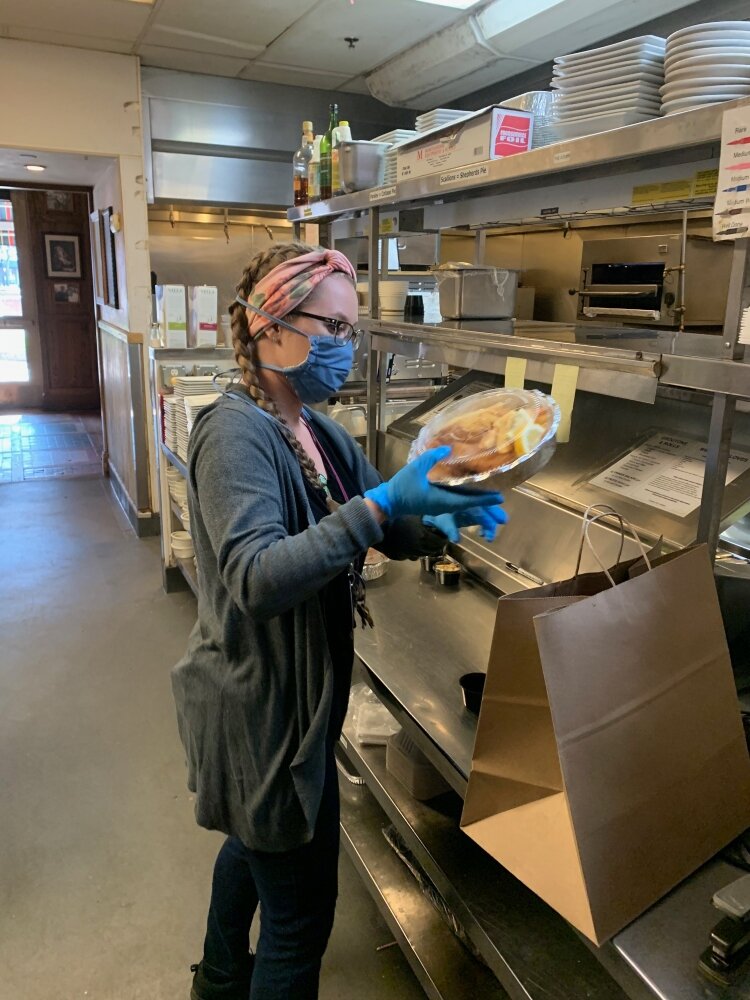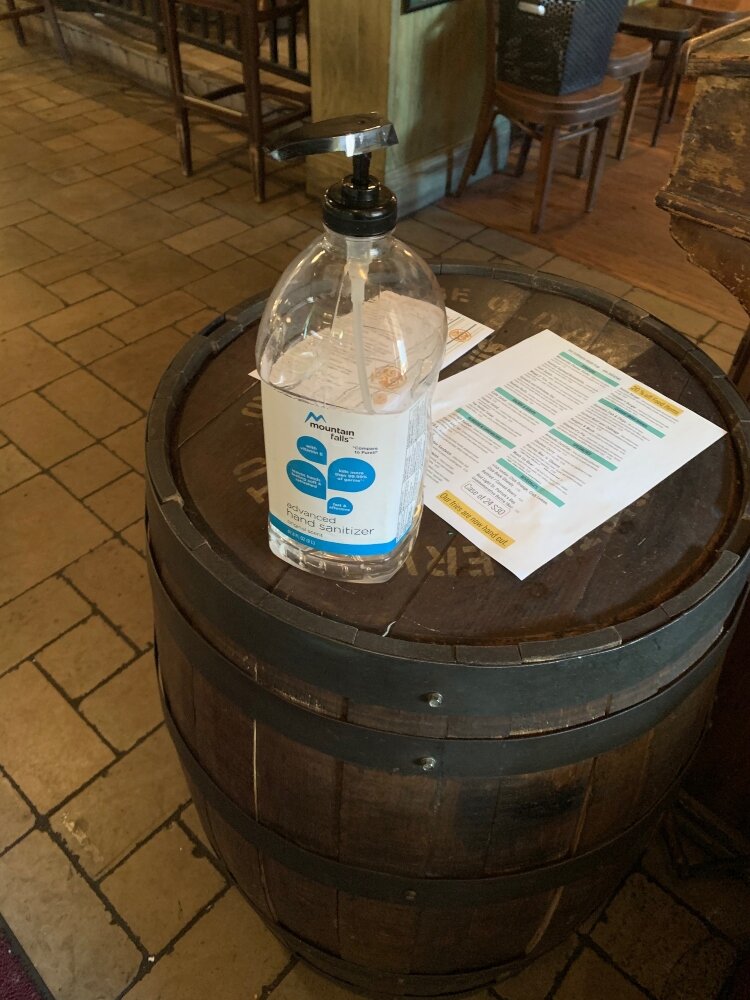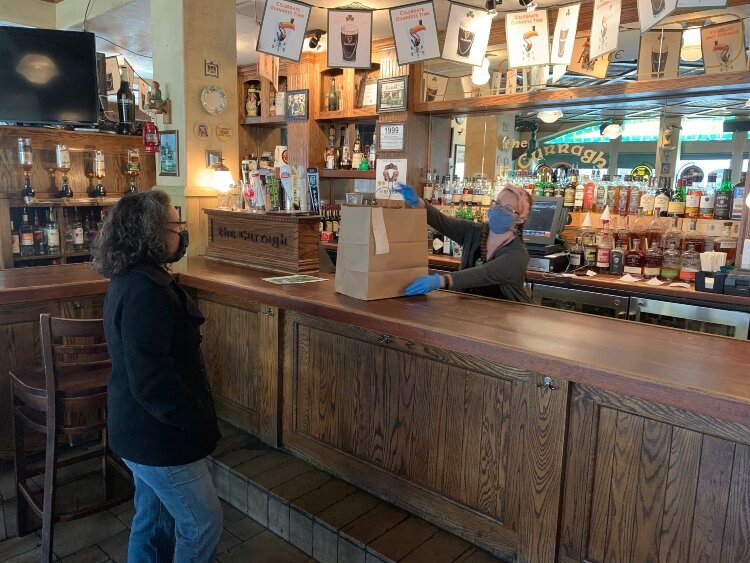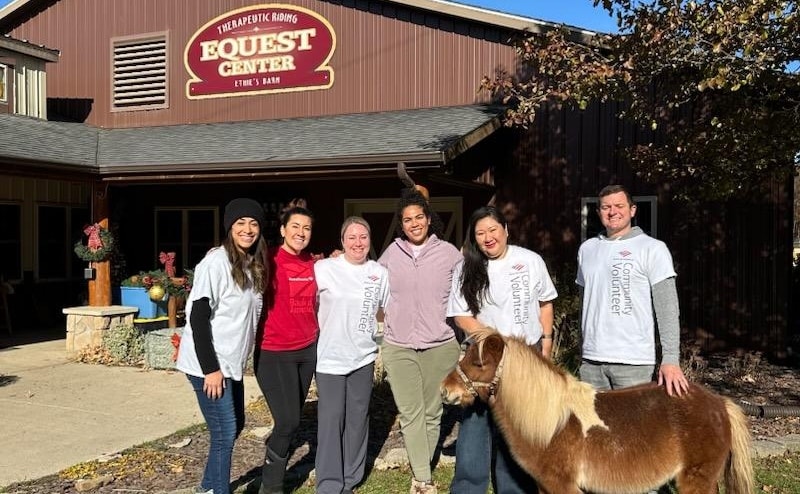How to help your restaurant survive the COVID-19 pandemic
Small business expert Liz Hoffswell offers 5 strategies to help restaurateurs continue to serve customers during this economic crisis.
Getting your Trinity Audio player ready...
Editor’s note: This column is part of a series featuring Lakeshore experts offering advice to small businesses as they navigate their recovery through the COVID-19 crisis. The restaurant industry — with more than 15 million skilled workers across the country — has been one of the hardest hit by the COVID-19 pandemic. In fact, some industry experts predict that up to one-third of Michigan restaurants might be forced to close permanently.

Relief programs are being launched daily to help small businesses recover from the economic fallout of the health crisis. Explore the options, but do not make any reactive decisions. Take time to assess your situation and try to find the best course of action.
In the meantime, here are four things you can do to stay open during the crisis and recovery period.
Return your booze!
On Monday, Governor Whitmer signed Executive Order 2020-6 that authorizes the Michigan Liquor Control Commission (MLCC) to buy back alcohol purchased before March 16 from licensed bars and restaurants. But be quick, you must put in your request to the MLCC by the end of day Friday, April 17.
Switch to takeout and deliveries
Never done takeout? That’s OK. Even if your restaurant has never had a booming takeout and/or delivery business, new regulations to support social distancing have made it easier to do so. You do not need a special license; your current license is still in effect.
How to get takeout food to your customer:
- You can have up to five people in your restaurant at a time to pick up orders. Use disposable gloves to hand over the food; sanitize or change gloves between each order.
- Set up curbside pickup. Either bring the food directly to the customer’s car or put a table outside, weather permitting, from which they can pick up their food. Add a bottle of hand sanitizer and paper towels with a sign encouraging your customers to use it.
- Some downtown areas are creating centralized pickup zones for takeout food.

Right now, your customers are getting comfortable with having everything delivered, including food. While continuing to take orders through GrubHub, UberEats and DoorDash, consider offering free delivery through your restaurant. This would allow you to utilize staff that might otherwise be furloughed. Additionally, some customers don’t trust that food delivery services adhere to safe handling procedures. Here are some suggestions for deliveries:
- Talk to your insurance company to make sure your employees and vehicles are covered.
- Use hot boxes to ensure the food is delivered at the right temperature.
- Limit the distance in which you can deliver.
If you have a Special Designated Merchant (SDM) addition to your liquor license, you can sell beer and wine to go and deliver it. It must be sold or delivered by a properly trained employee of the restaurant, and ID must be checked. Breweries can sell both packaged beer and draft beer in growlers. Check the MLCC FAQ sheet for further information regarding alcohol sales.
Change up your menu
Your restaurant may be known for its gourmet food and fine-dining experience, but if you want to stay open during this COVID-19 pandemic, you may need to change things up a little. Here are some tips:
- Streamline your offerings — this is not the time for a 10-page menu. You will likely have limited kitchen staff, so pick a few things you do well, are profitable and your customers love.
- Use up inventory. Create dishes that use what you have on hand. While we have not seen any issues in the supply chain, it might be a good time to switch to canned and other shelf-stable ingredients. You can always switch back when things are back to normal.
- Create or modify offerings that stand up to travel. Think of food items that are easy to pack and transport. This has traditionally included pizza and sandwiches, but salads also do well. With people grocery shopping less, they might appreciate some fresh salads and veggies on the menu.
- Design family-style meals. Make it more economical and convenient to place a large order.
- Put your menu online and promote it on social media.
Make it ridiculously easy to place and pay for an order with your restaurant — in person, on the phone and online. If you do not have your POS system set up to take online orders, now is the time. Older generations are discovering what millennials have known for years — it is very easy and convenient to order your dinner online, pick it up and enjoy it from the comfort of your own home. This is going to be your new normal. Even after the crisis is over, your clients are going to want the convenience of takeout and delivery. Making the change now will not only help you survive in the short term, it will help you thrive in the long term.
Communicate, communicate, communicate
As the COVID-19 pandemic continues, your customers are going to be even more scared, stressed and isolated.

- Record a short video outlining the safety practices in your restaurant and put it on social media. Assure your customers that the food they get from you is safe, as well as delicious.
- Don’t assume everyone knows you are open. Post daily updates with hours and specials.
- Send email blasts to your customers — everyone is stuck inside right now, so your emails are more likely to be read. Make them as welcoming, reassuring, and as appetizing as possible.
- Be positive in your messaging — we are all in this together.
This is a difficult time for you, your business and your customers. However, as a restaurateur, you know that your restaurant can be a source of positive influence in your community. You do more than serve food. You support employees, you provide comfort and a friendly smile and, of course, you feed your patrons. Use this slowdown as a time to sharpen your skills, refine your processes, and put out the very best product you can. Your customers want you to succeed, and so do we.
Michigan Small Business Development Center (SBDC) consultants are here to assist you in this process. To register for our no-cost consulting services, click here.
This article is a recap of Michigan SBDC Business Consultant John Schmitt’s presentation “Sustaining Your Restaurant Business During COVID-19.” You can find the webinar along with our other COVID-19 support content by going to sbdcmichigan.org/small-business-covid19/
Liz Hoffswell is a certified business consultant for the Michigan Small Business Development Center, which is based at the GVSU Seidman School of Business in Grand Rapids. She has more than 25 years of experience in management, operations, finance, sales, and marketing, working with organizations of all sizes. Additionally, Hoffswell is a serial entrepreneur and has started several small businesses throughout her career.
If you have a topic or question you would like Liz to address, send an email to Managing Editor Shandra Martinez at shandra@issuemediagroup.com.
This article is part of The Lakeshore, a new featured section of Rapid Growth focused on West Michigan’s Lakeshore region. Over the coming months, Rapid Growth will be expanding to cover the complex challenges in this community by focusing on the organizations, projects, programs, and individuals working to improve conditions and solve problems for their region. As the coverage continues, look for The Lakeshore publication, coming in 2020.









